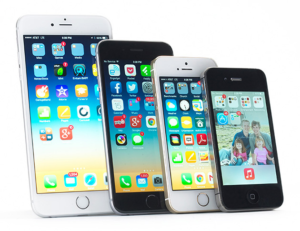 The anticipation of an Apple release is always palpable among consumers. The excitement, the long line, and the lure of Apple’s iconic and sleek product design command top dollar.
The anticipation of an Apple release is always palpable among consumers. The excitement, the long line, and the lure of Apple’s iconic and sleek product design command top dollar.
But how does Apple’s iPhone 7 release compare to the usual iPhone release? We found out.
Using our device detection API, we were able to quantify customer adoption of iPhones over the first 14 days following their release. We compared the Apple iPhone 6 and 6 Plus release in 2014 with the iPhone 6S and 6S Plus release in 2015, and the iPhone 7 and 7 Plus release in 2016. Learn more, watch our MOVR Q3 2016 Report Webinar.
What We Know: Growth Trends Slowing for iPhone 7
The growth trend for the iPhone 7 and 7 Plus is slower than its predecessors (iPhone 6/6 Plus and iPhone 6S/6S Plus). This is in keeping with data from other news sources, which also found the iPhone 7 and 7 Plus release to be slightly slower than the iPhone 6S and 6S Plus release but much slower than the iPhone 6 and 6 Plus release.

However, our view of the first 14 days adds another level of clarity and insight on the early adoption rates for these different releases. We took our advanced device detection API and tracked the number of hits from the various new releases over this time period to find the overall trend in traffic.
Your company can use our WURFL.js to track iPhone mobile usage and ImageEngine for faster page loads and increased online purchases.
Sign up to receive our MOVR Q3 2016 report.
What We Don’t Know: Is Enthusiasm Waning for iPhone 7?
It remains to be seen if this slow growth indicates a downward trend in customer excitement surrounding the release of the iPhone 7. Many commercial factors surround the iPhone 7 and 7 Plus release that may have an impact on long term growth trends. Some include critics’ comments and improved consumer savvy.








